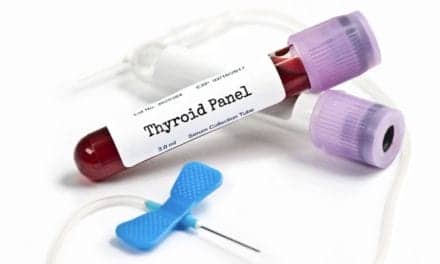By Andy Lundin
Polio or “infantile paralysis”—a disease that once presented a pall over summer activities and made parents catch their breath—has been virtually non-existent for decades. Or it was until the summer of 2022.
A recently reported case of polio in the U.S.—affecting a resident of Rockland County, New York—was initially thought to be acute flaccid myelitis (AFM), an uncommon but serious neurologic condition that affects the nervous system, specifically the area of the spinal cord called gray matter. (1)
The alleged case of AFM was later determined to be polio thanks to prompt and efficient testing and surveillance practices designed to curb and combat infectious diseases like the poliovirus.
These actions—along with broader wastewater testing efforts and immediate vaccination initiatives to offer polio vaccination for un- or undervaccinated people—have helped to monitor the outbreak and prevent new paralytic cases.
How Diagnostic Testing Rediscovered Polio in 2022
Clinicians diagnose AFM by reviewing thorough medical history of a patient, conducting a physical exam, and performing an MRI to review pictures of the spinal cord (2). It is important that these diagnostic tests—MRI and laboratory testing of the cerebrospinal fluid, respiratory fluid, blood, and stool—are done as soon as symptoms develop in a patient.
The stool specimens that the CDC receives for possible cases of AFM are also tested for poliovirus, which is what helped to spot the case found in New York this past summer as polio and not AFM.
“This patient presented to the emergency room with acute flaccid weakness, and an MRI that showed gray matter lesions,” says Janell Routh, MD, MHS, medical officer, USPHS, CDC. “And so, the clinical team thought that this was acute flaccid myelitis. They collected all the appropriate samples, including a stool sample, which surprisingly came back as poliovirus.”
This ended up being the first reported case of poliovirus in the U.S. since 2013. (3)
The case also led to subsequent wastewater testing efforts by the New York State Department of Health (NYSDOH) which identified that the disease was present in wastewater samples during the months of June and July. This discovery resulted in New York declaring a state of emergency aimed at boosting low polio vaccination rates.
The NYSDOH continues to collect wastewater specimens and has confirmed the presence of poliovirus as late as October. At that time, a total of 94 positive wastewater samples found within the state, with 87 samples having enough genetic material to confirm a genetic link to the only paralytic case detected to date (other samples did not have enough genetic material to link to the case). (4.)
If not for the robust diagnostic and wastewater testing methodologies set in place, the diagnosis of paralysis caused by poliovirus might have gone undetected and the outbreak could have spread, infecting other individuals and leading to further cases of paralysis.
What Caused Polio’s Reappearance?
From this diagnosis, it was determined that the patient—who was not vaccinated for polio—was infected by vaccine-derived poliovirus type 2 (VDPV2), a strain related to the weakened live virus that is contained in the oral polio vaccine (OPV). (5) The patient would have picked up the live virus from someone who had received OPV as part of vaccination in another country.
Since 2000, only the inactivated poliovirus vaccine (IPV) has been used in the U.S. to eliminate the risk of vaccine associated paralyptic polio that can occur with OPV, according to the CDC.
And while cases of U.S.-borne polio have virtually become extinct since 1979, other countries are still struggling with polio—particularly in regions that have low vaccination rates or lack a proper sewage system—which suggests that the strain could have been brought in from outside of the country.
“We still do have cases of wild poliovirus in both Pakistan and Afghanistan and vaccine-derived poliovirus outbreaks in other countries,” says Routh. “I think almost 30 countries now have ongoing vaccine-derived poliovirus outbreaks. So, this is not a wild poliovirus we’re experiencing, but a virus that has sort of mutated over time back to a neurovirulent form as a result of the use of the oral polio vaccine in under-vaccinated communities.”
Indeed, the virus’ genetic sequences from the Rockland County patient and wastewater specimens collected in New York have also been linked to wastewater samples in Jerusalem, Israel, and London, England, indicating community transmission, according to the Global Polio Eradication Initiative. (6)
Diagnostic Methods for Poliovirus
According to the Centers for Disease Control and Prevention, poliovirus can be detected in specimens from the throat, stool, and, occasionally, cerebrospinal fluid (CSF) by isolating the virus in cell culture or by detecting the virus by PCR. Acute flaccid myelitis—what the recent case of polio in the U.S. was originally thought to be—has symptoms that are very similar to polio. AFM is diagnosed by exam and MRI to look at the patient’s brain and spinal cord. Specimens are collected to rule out poliovirus as a cause and to look for other viral causes of this illness
Some of the specific lab testing methods for polio include:
- Culture: Virus isolation in culture is the most sensitive method to diagnose poliovirus infection. Poliovirus is most likely to be isolated from stool specimens. It may also be isolated from pharyngeal swabs. Isolation is less likely from blood or CSF.
- Intratypic Differentiation: Real-time reverse transcription PCR is used to differentiate possible wild strains from vaccine-like strains (“intratypic differentiation”), using virus isolated in culture as the starting material.
- Genome sequencing: This sequencing is used to confirm the poliovirus genotype and determine its likely geographic origin.
- Serologic Testing: Serology may be helpful in supporting the diagnosis of paralytic poliomyelitis, particularly if a patient is known or suspected to not be vaccinated.
- Cerebrospinal Fluid Analysis: Detection of poliovirus in CSF is uncommon. CSF usually contains an increased number of leukocytes and a mildly elevated protein. These findings are nonspecific and may result from a variety of infectious and noninfectious conditions.
What this Says About Broader Testing Measures
Polio’s reappearance in 2022, fortunately, also happened to take place in an era of diagnostic testing that is more than prepared to identify infectious diseases. Modern-day diagnostic tools allow for effective disease detection on both a macro and micro level.
“I think first you have to look at it from an epidemiologic standpoint,” says Bruce K. Patterson, MD, CEO & founder of IncellDx. “Is the disease on the East Coast? Is it in New York? If it is, and a patient shows signs and symptoms of polio then, of course, we have to consider clinical lab testing in those particular regions for people who have those symptoms.”
Patterson added: “I think you have to answer the ‘Where is it?’ question before you try to identify who has it.”
And once the larger regions and areas of concern are identified, then testing should be more focused intently on symptomatic individuals.
“Clinical labs do perform a very important task for us, and that is enterovirus testing,” Routh says. “This would be the first in a series of steps to confirm an enterovirus/poliovirus infection.”
Indeed, thorough diagnostic practices and vaccination efforts in the U.S. have helped keep polio cases in the U.S. stay virtually non-existent.
And while robust polio vaccination efforts in the U.S. have seemed to effectively stall what could have been a much larger problem in the summer of 2022, polio’s brief reappearance indicates that better diagnostic testing for infectious diseases are still very much necessary, especially with how they may enable early detection of viruses that have the potential to cause outbreaks and that are vaccine preventable. Early detection may also allow the proactive administration of treatments that might mitigate severe disease.
“We are going to have to be prepared better in the future for emerging infections,” Patterson says of establishing better protection against diseases. “It takes time to come up with pathogen-specific therapeutics. What my approach has been to manipulate the immune system in such a way that it’s more effective in either eradicating the bug or preventing the damage that the bug is doing. And I think that is the mindset that we need to have going forward is that there’s going to be a lag when a pathogen emerges and when we’re able to effectively treat it specifically.”
The Importance of Vaccines
Reacting to the initial reappearance of polio in the U.S., New York’s Health Commissioner Mary T. Bassett, MD, MPH, urged those who had not received the polio vaccine to do so. Fortunately, however, much of the U.S. is already well-protected against polio, including vaccine-derived polio, thanks to the inactivated IPV.
“Most people living in the United States were vaccinated during childhood,” says Routh. “We know that at least three doses of IPV protect against paralysis with an effectiveness of 99% or more. So, if you have your full IPV vaccination series, you are protected against poliomyelitis or paralytic polio.”
But despite these protections, the virus’ return indicated a lapse on the “control” the country had on the disease, of which diagnostic testing plays a large role in.
“I think the key to what we were trying to do with polio is basically put a bubble around the last few cases, and ensure that it stays within the bubble,” says Patterson, “Obviously, this represents a case in which something got out of the bubble.”
Fortunately, the broader diagnostic and wastewater testing measures that were already in place helped to keep this isolated case from growing into something much worse by helping health departments to direct vaccine resources to where they were most needed.
Focusing on the Current Pandemic
As concerns regarding a resurgence of polio soften, industry attention should, again, return to more pressing and immediate challenges. This is particularly key to the COVID pandemic, of which proper diagnosis is still of the utmost importance to reaching a more fully realized endemic state.
In the early stages of the pandemic, the Global Polio Eradication Initiative held a several-month pause on its polio vaccination campaign efforts due to COVID, pointing to the need for polio testing regimens to remain in place and stay consistent.
“In 2020, the pandemic prompted a four-month pause of the eradication initiative’s campaigns, disrupting disease surveillance and routine immunizations. That put more than 80 million children at increased risk of polio. Vaccine-derived poliovirus outbreaks tripled from 2019 to 2020. Cases declined in 2021 as immunizations resumed,” according to the Washington Post. (7)
Patterson emphasized the importance of keeping a focus on COVID-19, especially since vaccination rates for SARS-CoV-2 are significantly lower than those for polio.
“What’s facing us right now is COVID, trying to eradicate COVID and eradicating variants,” Patterson says. “The statistics on the percentage of the world population that’s vaccinated for COVID is very small, versus something like smallpox and polio, which is closer to 100%. We still have to worry about COVID, and it’s these outposts that don’t have access to medical care screening where the virus thrives and is replicating. It’’ forming new variants that have different selection pressures that make them more infectious make them more deadly.”
Andy Lundin is the associate editor for CLP.
Resources:
- “About Acute Flaccid Myelitis,” CDC
https://www.cdc.gov/acute-flaccid-myelitis/about-afm.html - “Diagnosis & Treatment of AFM,” CDC
https://www.cdc.gov/acute-flaccid-myelitis/diagnosis.html - “New York reports 1st U.S. polio case in nearly a decade,” Stobbe, Mike, Associated Press
https://www.pbs.org/newshour/health/new-york-reports-1st-u-s-polio-case-in-nearly-a-decade - Wastewater surveillance, NYSDOH
https://www.health.ny.gov/diseases/communicable/polio/wastewater.htm - “Vaccine-Derived Poliovirus,” CDC
https://www.cdc.gov/vaccines/vpd/polio/hcp/vaccine-derived-poliovirus-faq.html - “Updated statement on report of polio detection in United States,” Global Polio Eradication Initiative
https://polioeradication.org/news-post/report-of-polio-detection-in-united-states/ - “Why Polio, Once Nearly Eradicated, Is Rebounding,” Gale, Jason, Bloomberg
https://www.washingtonpost.com/business/why-polio-once-nearly-eradicated-is-rebounding/2022/12/01/7a29bb82-7195-11ed-867c-8ec695e4afcd_story.html





